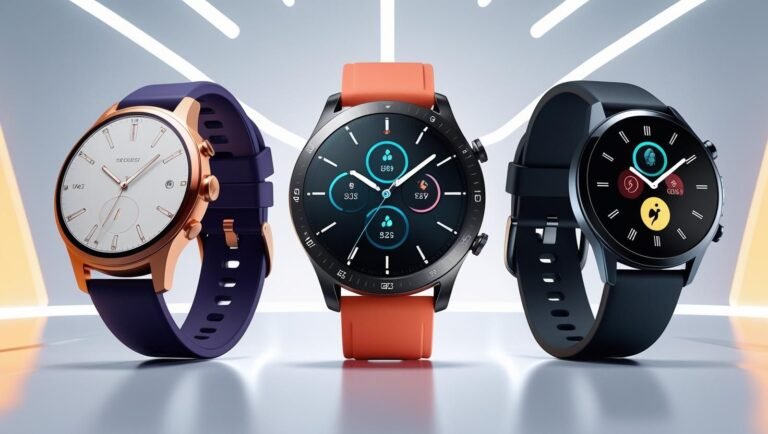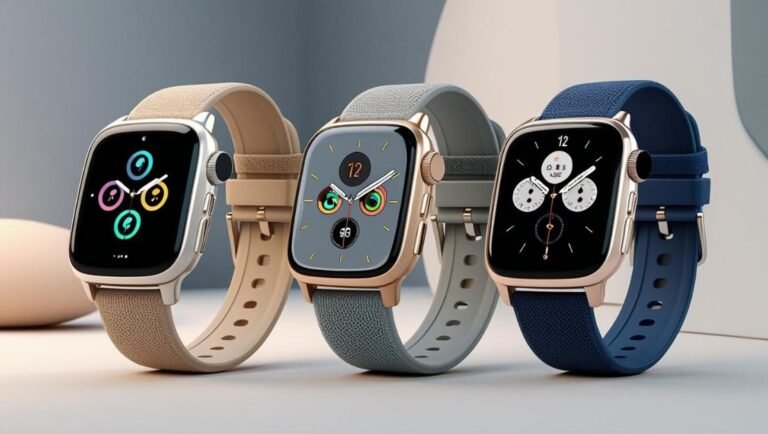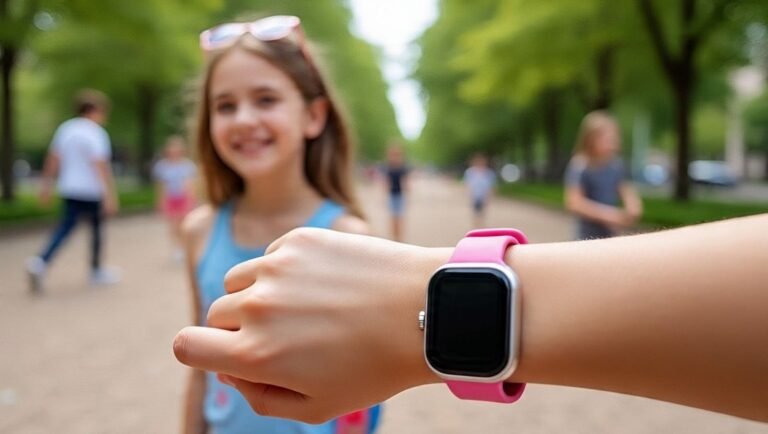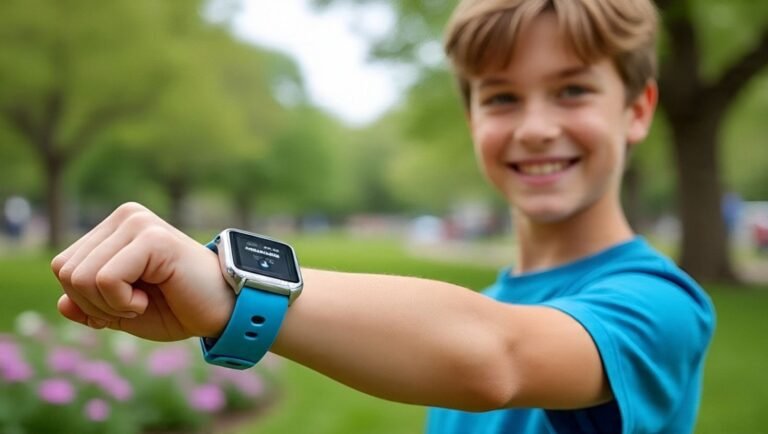Smartwatch Health Metrics Accuracy in 2025: A Complete Guide

Smartwatches are no longer just simple step counters. They have become powerful little gadgets for your health and wellness. With sensors that track everything from your heart rate to your blood oxygen, these devices aim to give you a full picture of your health.
But with all this information available, a big question is still there: how accurate are the health numbers from smartwatches in 2025?
The answer isn’t simple. It depends on what you are measuring. Some features are now very accurate and almost as good as medical devices. However, other features are still best for just watching trends and motivating you to live healthier, rather than for diagnosing a medical problem.
The Technology Behind the Data: How Smartwatches Read Your Body
To understand accuracy, it’s crucial to know what’s happening under the hood. Modern smartwatches rely on a suite of sensors:
- Photoplethysmography (PPG): This is the most common technology for heart rate monitoring. Green LED lights on the back of the watch illuminate your skin, and a sensor measures the amount of light reflected. Since blood absorbs green light, changes in the light reflection correspond to changes in blood flow, which are then used to calculate your heart rate.
- SpO2 Sensors: These use a similar principle but with red and infrared light to estimate the oxygen saturation in your blood.
- Electrocardiogram (ECG): Found in premium models, an ECG sensor measures the electrical signals of your heart to detect irregular heart rhythms.
- Accelerometers & Gyroscopes: These sensors detect movement and are essential for tracking steps, sleep, and physical activity.
- Skin Temperature Sensors: Newer smartwatches use these to track trends in your body temperature, which can provide insights into sleep and menstrual cycles.
These raw data points are then processed by advanced algorithms to give you the easy-to-understand metrics you see on your wrist.
Heart Rate Monitoring: Reliable, But with Caveats
For a long time, the accuracy of smartwatch heart rate monitoring was a major question. However, in 2025, the technology has reached a high level of reliability, especially for resting heart rate.
- At Rest: Smartwatches from top brands like Apple, Garmin, and Samsung can track your resting heart rate with up to 95% accuracy when compared to medical-grade devices.
- During Exercise: This is where things get a bit more complicated. During high-intensity workouts or activities with a lot of wrist movement (like weightlifting), accuracy can drop. The constant motion can cause the sensor to lose consistent contact with the skin, leading to inaccurate spikes or drops in readings.
- Pro Tip for Accuracy: For the most reliable heart rate data, ensure your watch is snug on your wrist, positioned just above the wrist bone. Keep the sensors clean and free of dirt or sweat.
Sleep Tracking: A Valuable Tool for Trends, Not Diagnosis
Smartwatch sleep tracking is a popular feature, but it’s important to set realistic expectations.
- What It’s Good For: Smartwatches are excellent at detecting when you fall asleep and wake up, as well as providing a general overview of your sleep stages (light, deep, and REM) and movement throughout the night. This data is invaluable for spotting long-term trends and helping you build better sleep habits.
- What It Can’t Do: Unlike a clinical sleep study (polysomnography) that measures brain activity, smartwatches rely on a combination of heart rate and motion data. While surprisingly good, this method cannot provide a medical-grade diagnosis for conditions like sleep apnea or insomnia.
- Noteworthy Advancement: Some new models are integrating more sensors, like SpO2, to look for breathing disturbances during sleep, which can be an early indicator of potential issues.
Blood Oxygen (SpO2): A Wellness Metric, Not a Lifeline
Many smartwatches now feature SpO2 sensors to estimate blood oxygen saturation. This can be a useful wellness metric, but it should not be a substitute for a medical device.
- When It’s Useful: Tracking SpO2 can help you see oxygen dips during sleep or monitor acclimation to high altitudes. For individuals with conditions like COPD, some studies suggest smartwatches can be a helpful tool for general monitoring, though accuracy is still a concern.
- Accuracy Concerns: The accuracy of SpO2 readings can be affected by factors like skin tone, tattoos, cold skin, and device fit. For a truly accurate reading, especially if you have a respiratory or heart condition, a medical-grade pulse oximeter is the gold standard.
ECG Monitoring: The Path to Clinical-Grade Accuracy
This is arguably where smartwatches have made the most significant leap forward. Premium smartwatches from brands like Apple, Samsung, and Garmin now offer FDA-cleared ECG features.
- How It Works: By placing your finger on the digital crown or a dedicated button, the watch completes a circuit to measure the electrical signals of your heart.
- What It Can Detect: These devices can accurately detect signs of Atrial Fibrillation (AFib), an irregular heart rhythm that can increase the risk of stroke. The data can often be shared directly with your doctor via a PDF.
- Important Caveat: While an ECG feature can provide life-saving alerts, it is not a replacement for a full-scale electrocardiogram conducted in a clinical setting. It’s a screening tool, not a diagnostic one.
The Bottom Line: Your Smartwatch Is a Health Partner, Not a Doctor
In 2025, the accuracy of smartwatch health metrics is at its highest point yet. For most people, these devices are incredibly reliable and useful for:
- Daily Fitness and Wellness: Tracking steps, calories, and exercise is highly accurate, especially with built-in GPS.
- Spotting Trends: A smartwatch’s greatest strength is its ability to collect data consistently over time, allowing you to see patterns in your heart rate, sleep, and activity levels.
- Early Alerts: Features like irregular heart rhythm notifications can provide a crucial early warning sign that something might be wrong, prompting you to see a doctor.
However, you should never use a smartwatch to self-diagnose a medical condition. If a metric seems concerning, or you simply don’t feel well, consult a healthcare professional.
Smartwatch Health Accuracy at a Glance
| Feature | Accuracy Level | Real-Life Use | Medical Grade? |
|---|---|---|---|
| Heart Rate | ✅ High | Fitness, wellness | ❌ No |
| Sleep Tracking | ⚠️ Moderate | Habit building | ❌ No |
| SpO₂ Monitoring | ⚠️ Moderate | General insights | ❌ No |
| ECG (Premium only) | ✅ High | Rhythm alerts | ✅ Yes (some) |
| Steps / GPS | ✅ High | Daily activity | ✅ Yes |
| VO₂ Max / Stress | ⚠️ Low–Medium | Lifestyle tracking | ❌ No |
Tips to Maximize Your Smartwatch’s Accuracy:
- Wear it correctly: A snug fit is key.
- Keep it clean: Clean the sensors regularly.
- Update your software: Manufacturers consistently release updates to improve their algorithms and accuracy.
- Enter accurate profile data: Your age, weight, and gender are essential for metrics like VO2 Max and calorie burn.
By using your smartwatch as a supportive health partner—a tool for awareness and motivation—you can unlock its true potential and take greater control of your well-being.




